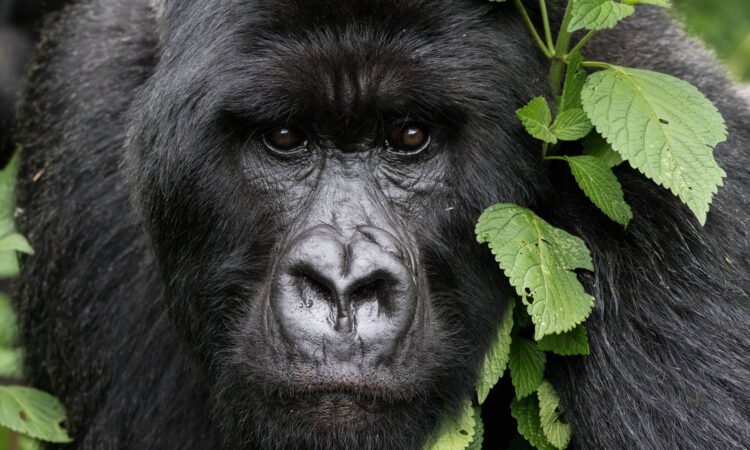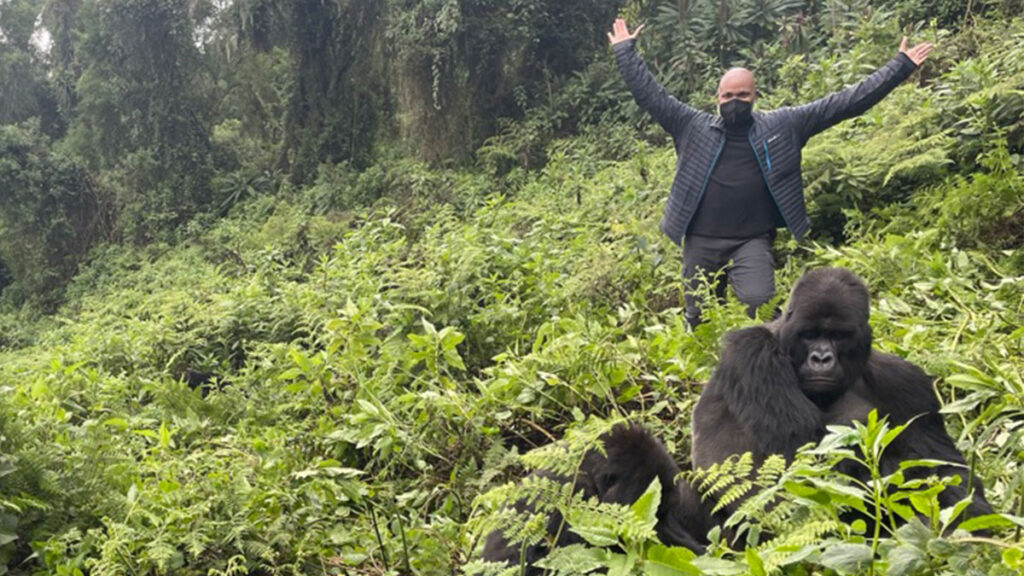
What to Expect from Gorilla Trekking in Rwanda
What to Expect from Gorilla Trekking in Rwanda : The continent of Africa is well-known for providing once-in-a-lifetime wildlife experiences. Few experiences are as memorable (or as widely listed on traveler bucket lists) as meeting mountain gorillas in their native habitat.
There are around 1,000 mountain gorillas left in the wild, separated into two groups. The first may be found in Uganda’s Bwindi Impenetrable Forest National Park. The second, bigger population is found in the Virunga Mountains, along the borders of Rwanda, Uganda, and the Democratic Republic of the Congo. In the Virungas, each country has its own national park. These are Volcanoes National Park, Mgahinga Gorilla National Park, and Virunga National Park, in that order.
Rwanda’s Volcanoes National Park is regarded as the greatest choice for gorilla trekking. It is a safer place to visit than the DRC, with superior infrastructure and a wider range of trustworthy travel providers.
Meanwhile, Mgahinga Gorilla National Park in Uganda is substantially smaller than its neighbors, with only one habituated gorilla group. This means that there are much fewer trekking permits available, and because the group frequently travels over the border, visitors may miss the gorillas entirely.
Although gorilla permits in Rwanda are significantly more expensive than Ugandan permits ($1,500 versus $700), they sell out faster, increasing the likelihood that you will be able to go on your preferred dates. A day excursion from Kigali is also conceivable, which reduces unnecessary expenditures. Here’s everything you need to know to plan your gorilla trekking journey in Volcanoes National Park, from the ideal time to travel to our favorite excursions.
What to Expect from Gorilla Trekking in Rwanda?
Volcanoes National Park features 12 habituated gorilla tribes for visitor interactions. Each one has an alpha male, or silverback, and his harem of females and adolescents. Your trip begins at the park headquarters in Kinigi at 7 a.m., when your party will be allocated to a troop and briefed on gorilla-visiting rules. These regulations include keeping a space of around 22 feet between you and the gorillas and not hiking if you are unwell with any dangerous diseases that might infect them. Basic principles for safe interactions, such as not using flash photography and keeping voices quiet and movement to a minimum, will also be discussed.
On the day of your visit, your group will be the only one interacting with your assigned unit. Each group has a limit of eight persons, ensuring that the experience is as inconspicuous as possible for both humans and gorillas. Gorillas spend their days on the move as nomadic creatures, hunting for the immense amount of plant necessary to maintain their enormous stature. As a result, predicting where each unit will be from one day to the next is challenging, however they tend to keep to a favored broad region.
Much of the expedition involves wandering through the foggy jungle to discover them, which may take anything from 30 minutes to five hours or more. Troops are often assigned according on the physical levels of each group, and porters are provided to assist with the transport of cameras and bags.
Once you’ve found the troop, you’ll spend up to an hour sitting silently within a few feet of them, watching as they go about their daily activities unaffected by their human visitors. Encounters are rigorously limited in time to ensure that each troop is affected as little as possible. After chimps and bonobos, gorillas are our closest cousins, sharing 98 percent of our DNA. As a result, much of their behavior is recognizable, whether it’s a mother grooming her young or juveniles fighting among themselves as the adults scavenge for food.

What to wear during gorilla trekking in Rwanda?
The temperature in Volcanoes National Park is both chilly and damp, so dress properly anytime you visit. This involves layering up so you can be warm while sitting with the gorillas but strip off when hiking. It also includes waterproof coats and leggings, as well as strong hiking boots or shoes with enough traction for slippery, steep terrain.
Because there are many stinging nettles, thick-woven clothes and gaiters are also advised. If you are prone to sunburn, carry sunglasses, a sunhat, and sunscreen for when the sun shines through the clouds.
How to Book your Gorilla Permit in Rwanda?
There are only 96 permits available for any given day, with eight persons authorized to visit each of Volcanoes National Park’s 12 habituated gorilla families every day. This means that they sell out months in advance, and procuring one might be difficult.
Do not wait until you are in Rwanda to book your permission. Instead, reserve your permit first and then plan the remainder of your trip around it. You may buy your permit on your own through the Irembo government website; however, the site is in Kinyarwanda, and most tourists prefer to have their tour operator guide them through the procedure.
How to Budget for your Gorilla Trekking Safari in Rwanda?
Rwanda is frequently touted as the greatest gorilla trekking location in the world. It is, however, the costliest, with permits costing $1,500 per person. Ten percent of this money is donated to local community activities, and it may also be used to pay farmers if gorillas invade their property and destroy their crops. This helps to maintain a positive connection between conservationists and locals while also increasing local support for gorilla conservation.
Aside from the trekking permit, you’ll need to factor in the costs of flights, lodging, transportation, meals, gratuities, and other extras. Booking an all-inclusive package with a firm that specializes in gorilla trekking safaris is often the most cost-effective option.
This way, you’ll know the complete cost ahead of time and have plenty of time to save without having to worry about unforeseen charges. However, package rates vary greatly based on the kind of lodging and other factors. Continue reading for our picks for the finest package trips for all budgets.
How to get to Volcanoes National Park?
Kigali International Airport, about 6 miles east of Kigali City, is the major point of entry for most foreign tourists. Musanze, the park’s closest town, is little over 70 miles away and takes just under three hours to get by car. Then it’s a 30-minute drive to Kinigi, the park headquarters from whence all gorilla trekking safaris depart. To travel to Volcanoes National Park, most visitors either rent a car and driver or take an organized trip that includes transfers.
In summary; the above article highlights What to Expect from Gorilla Trekking in Rwanda


